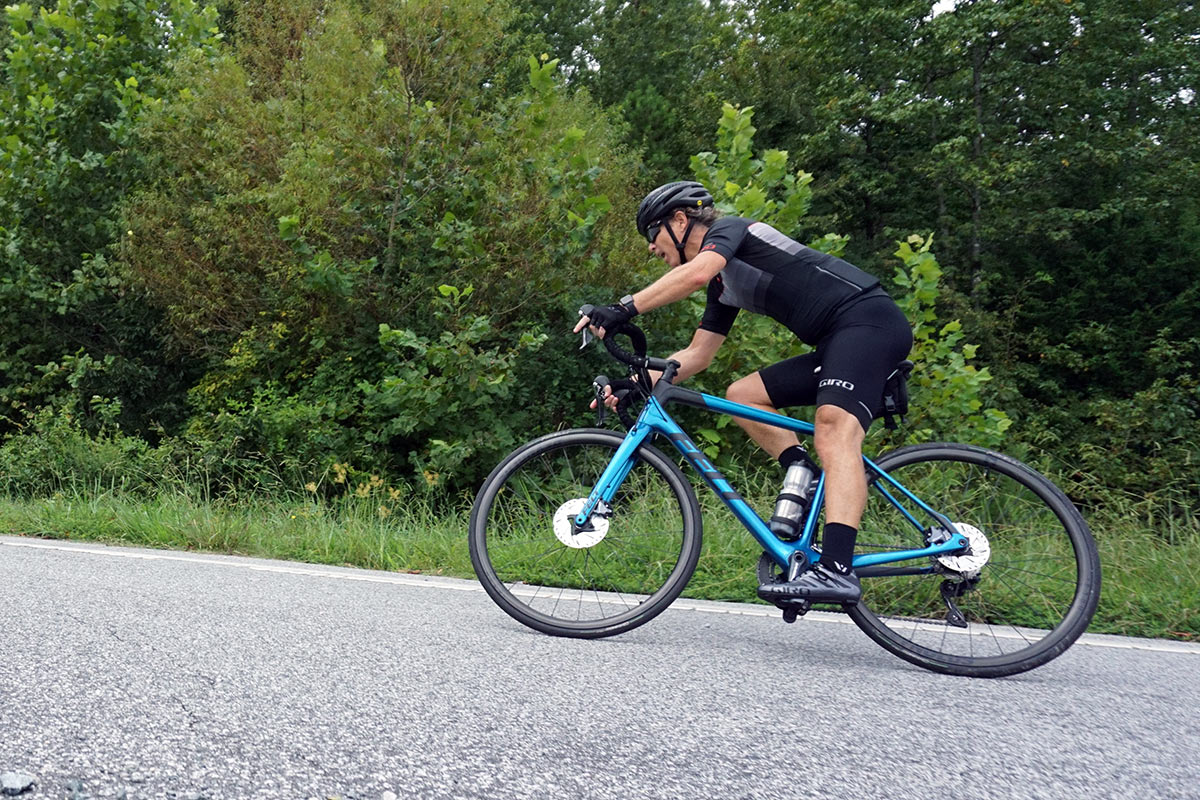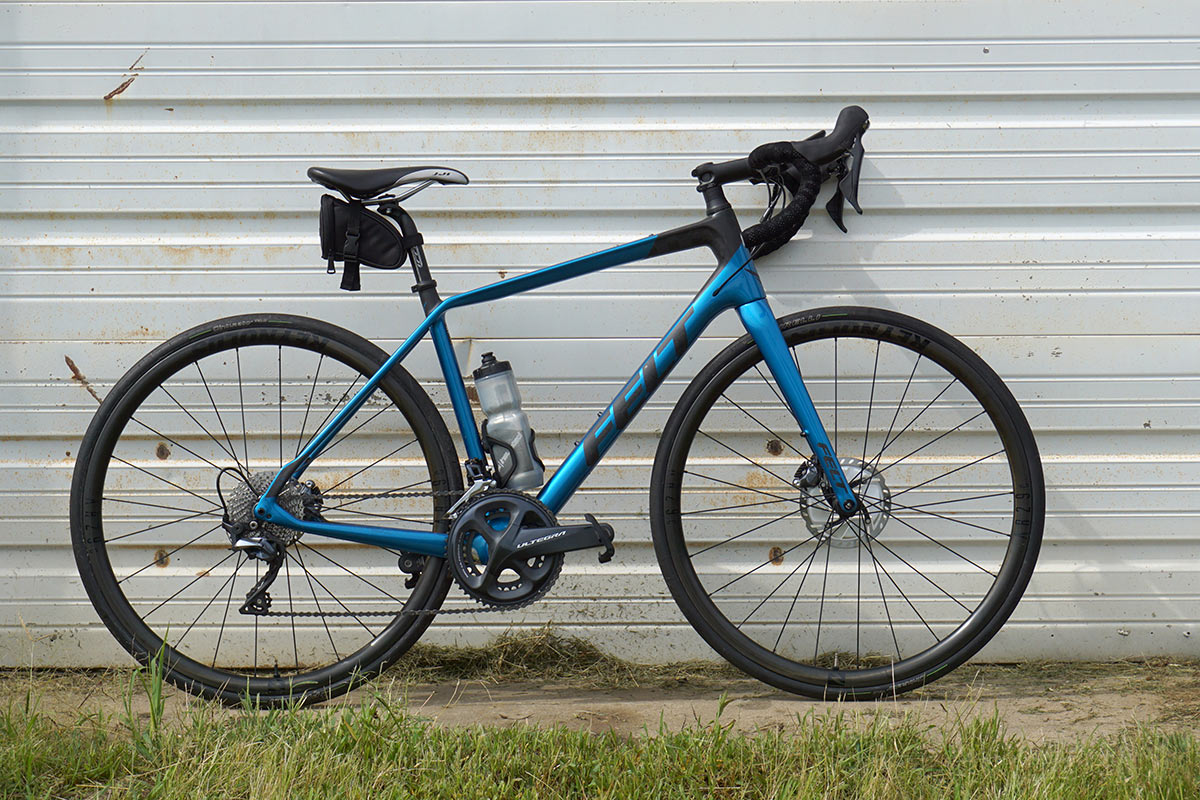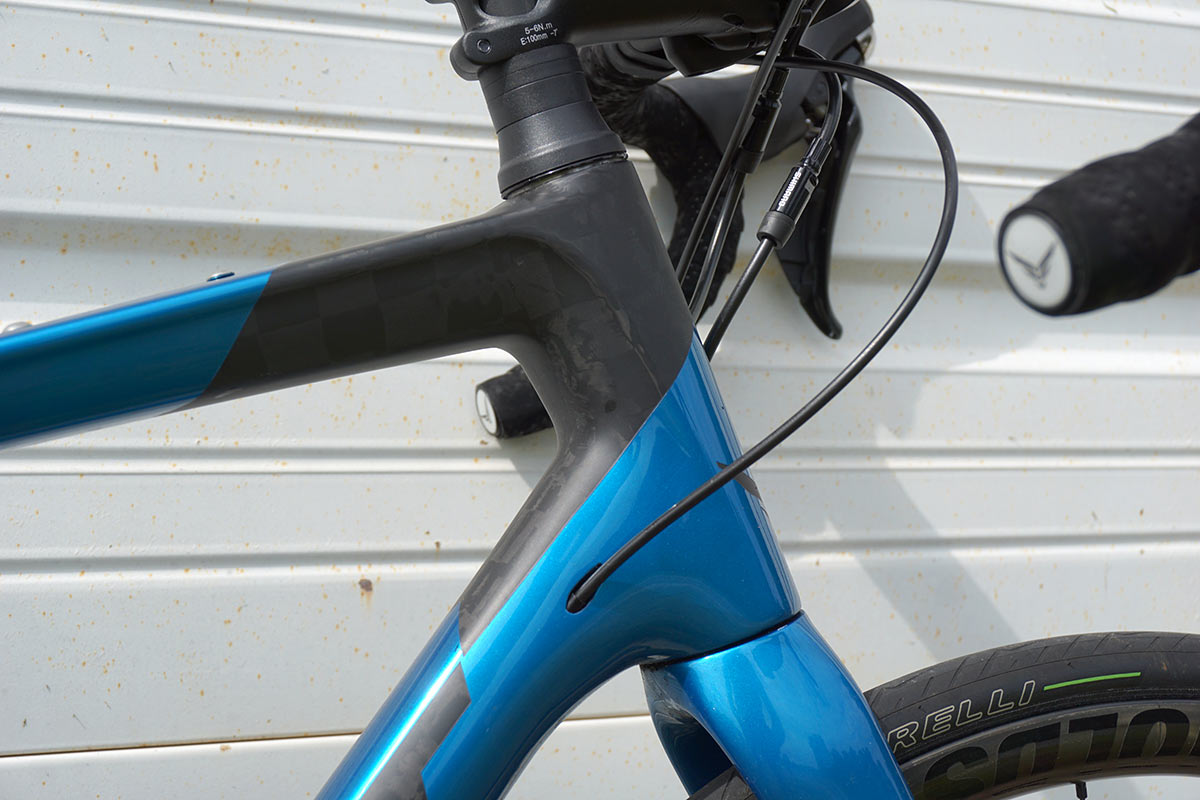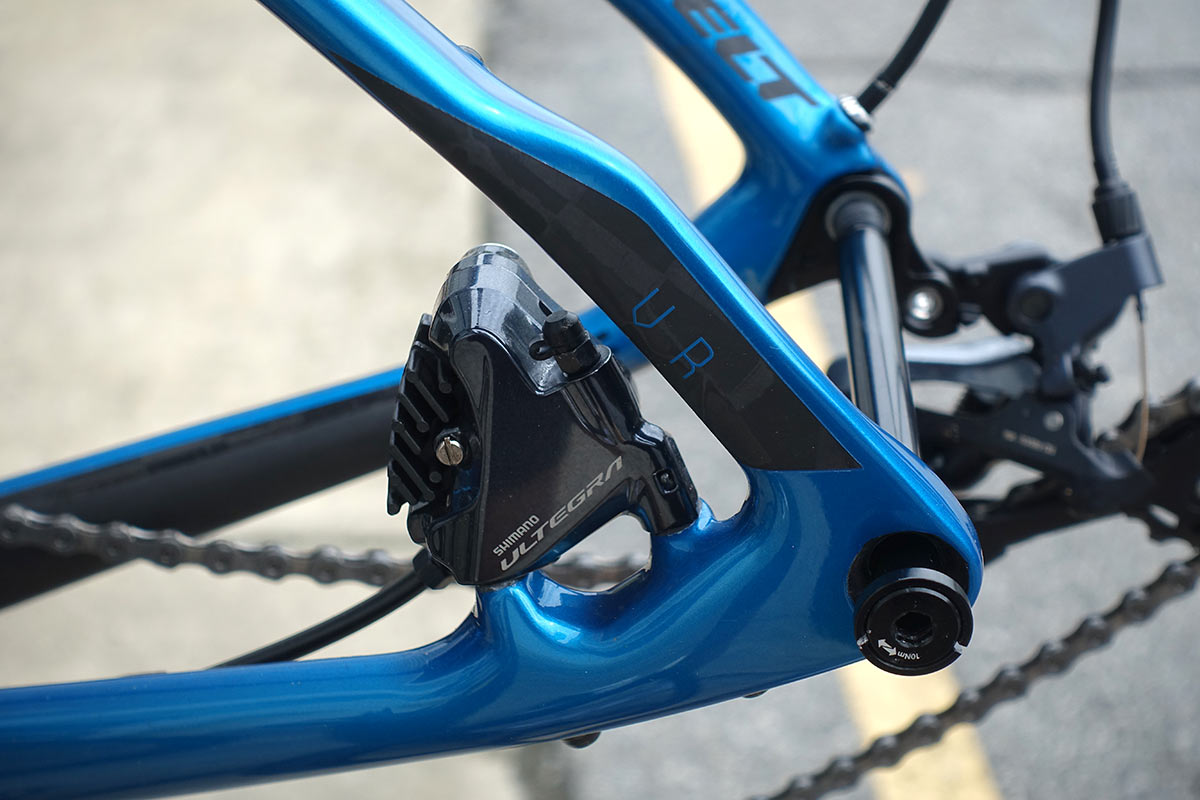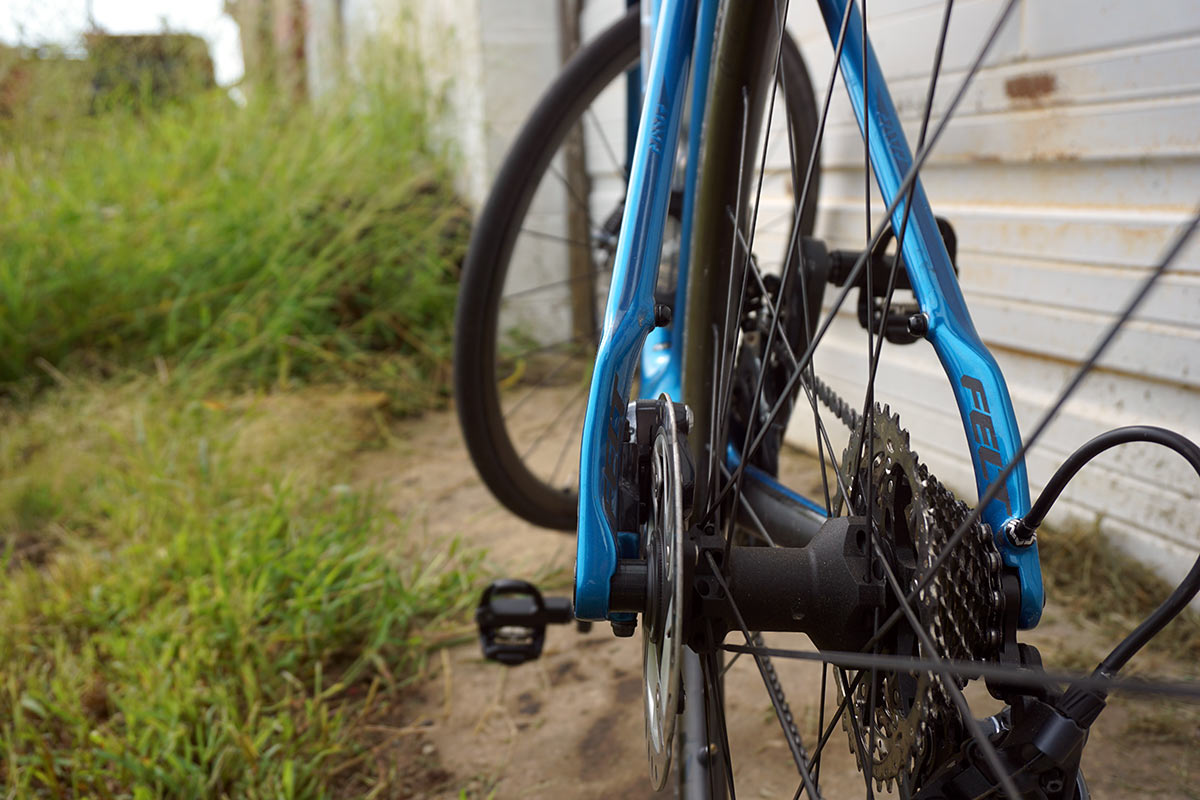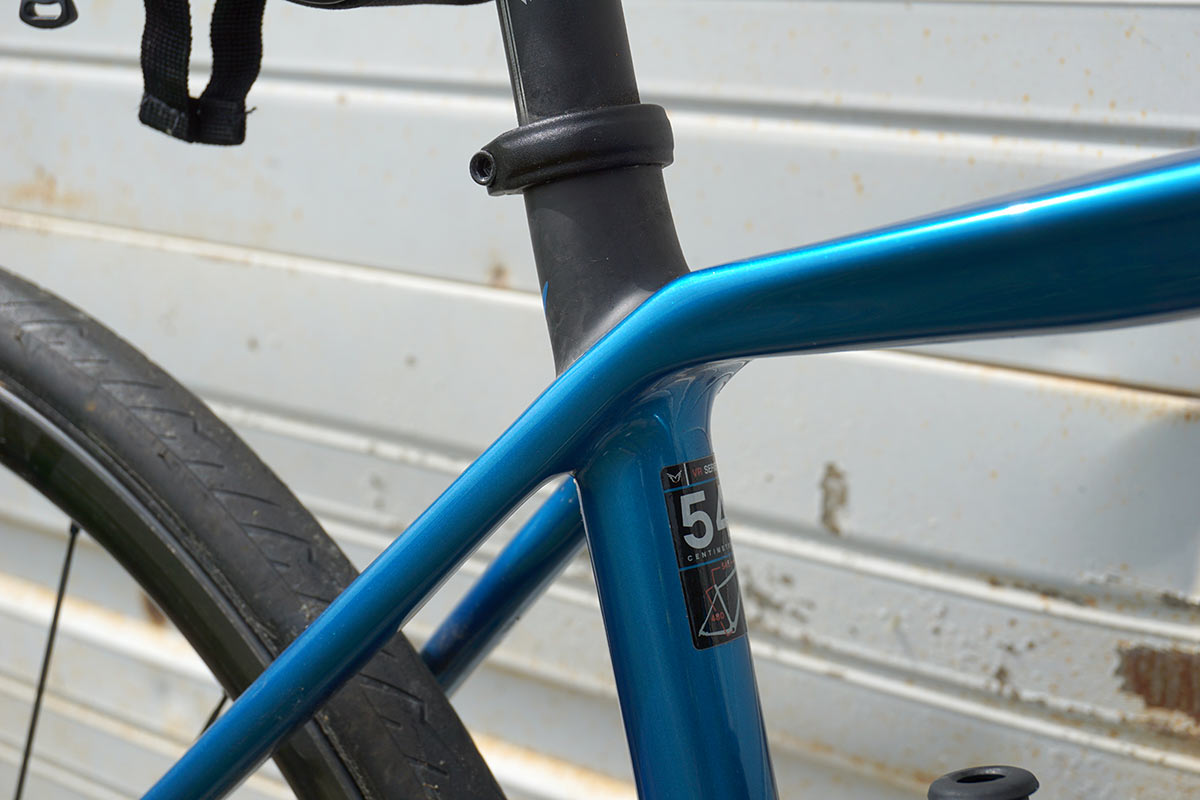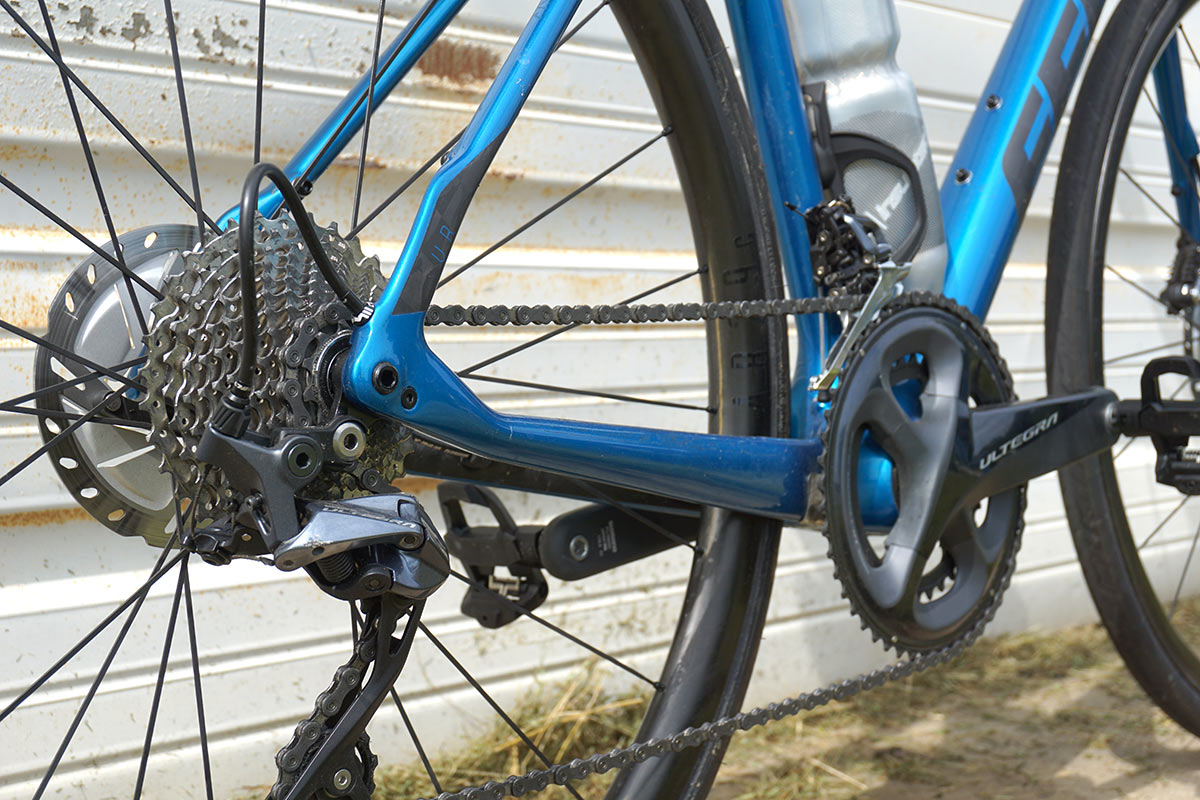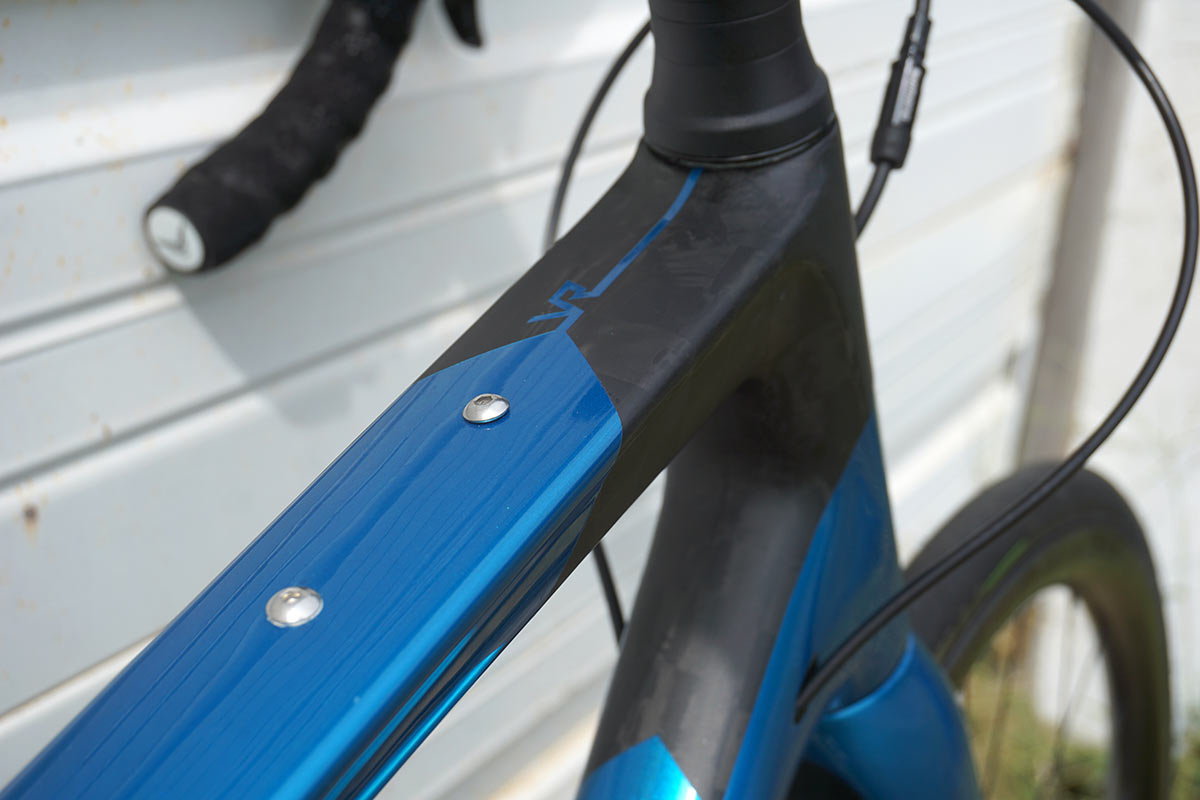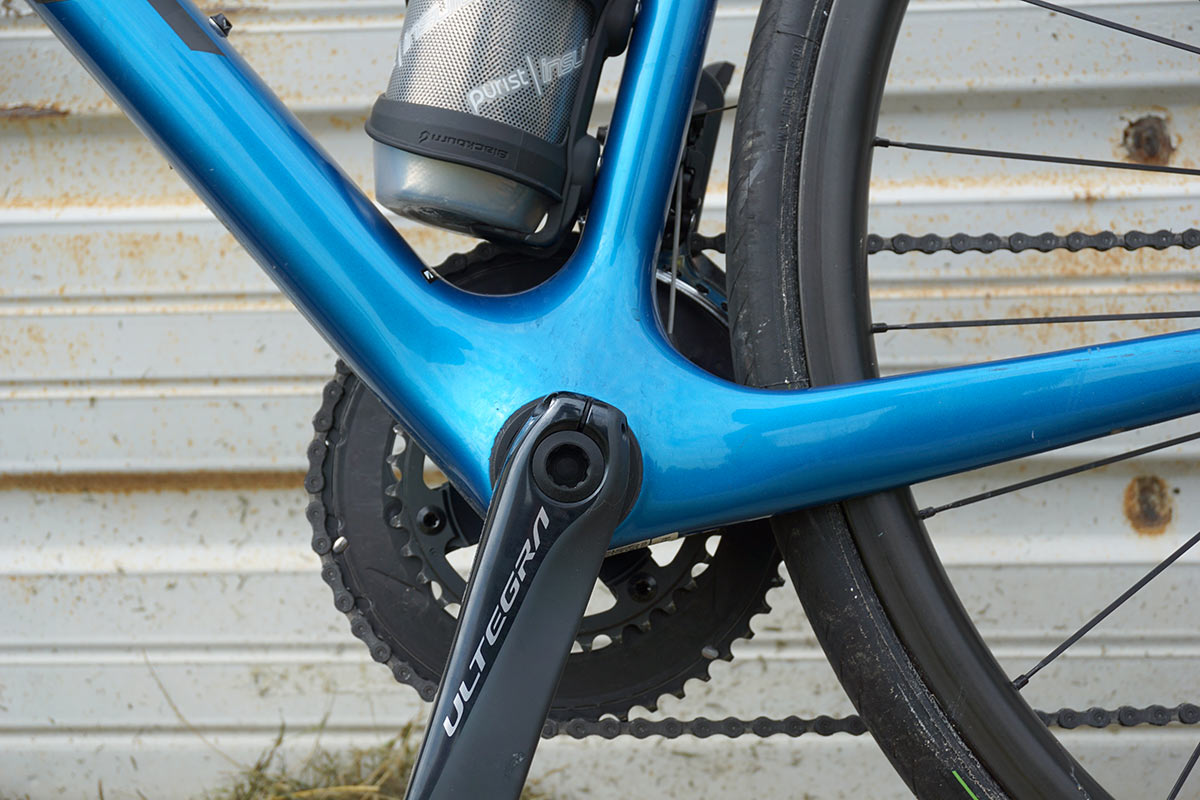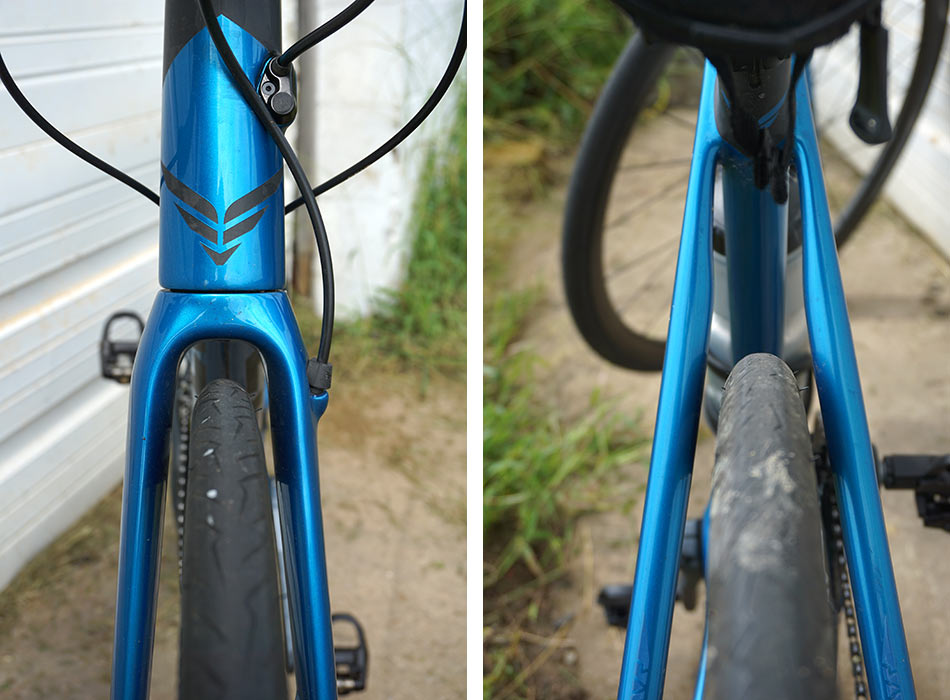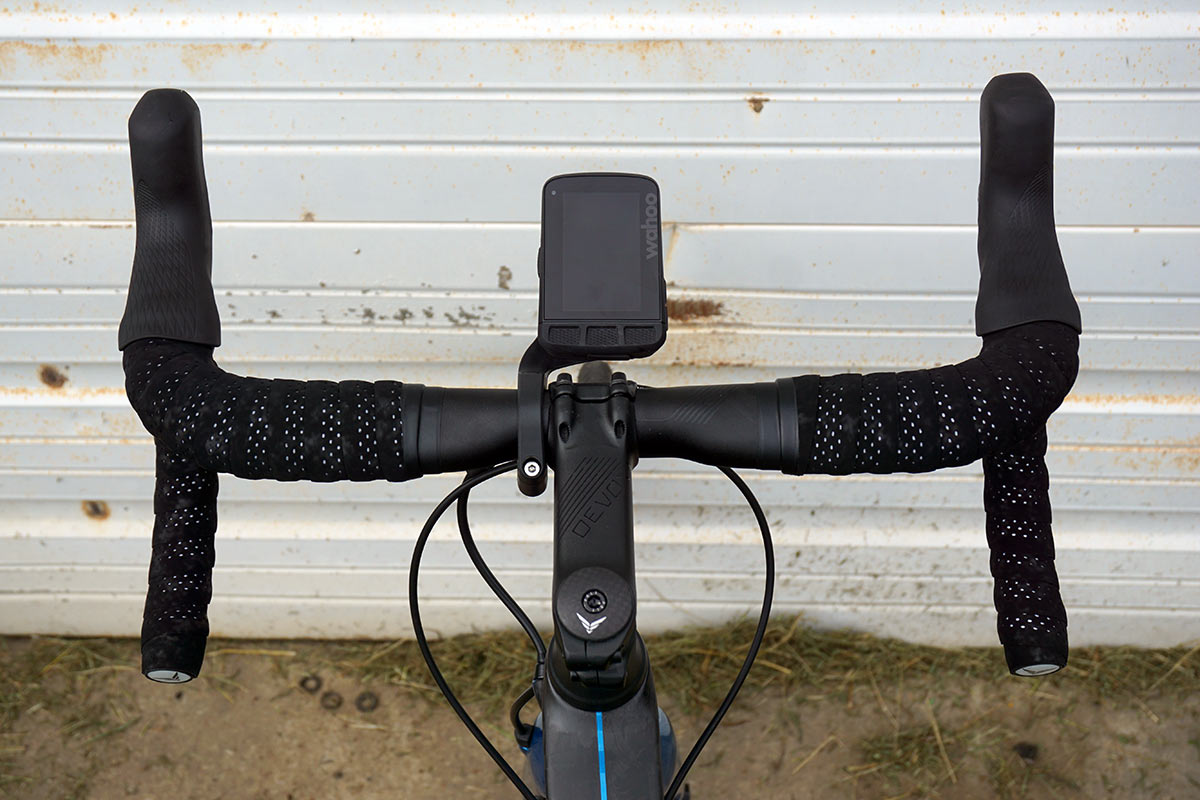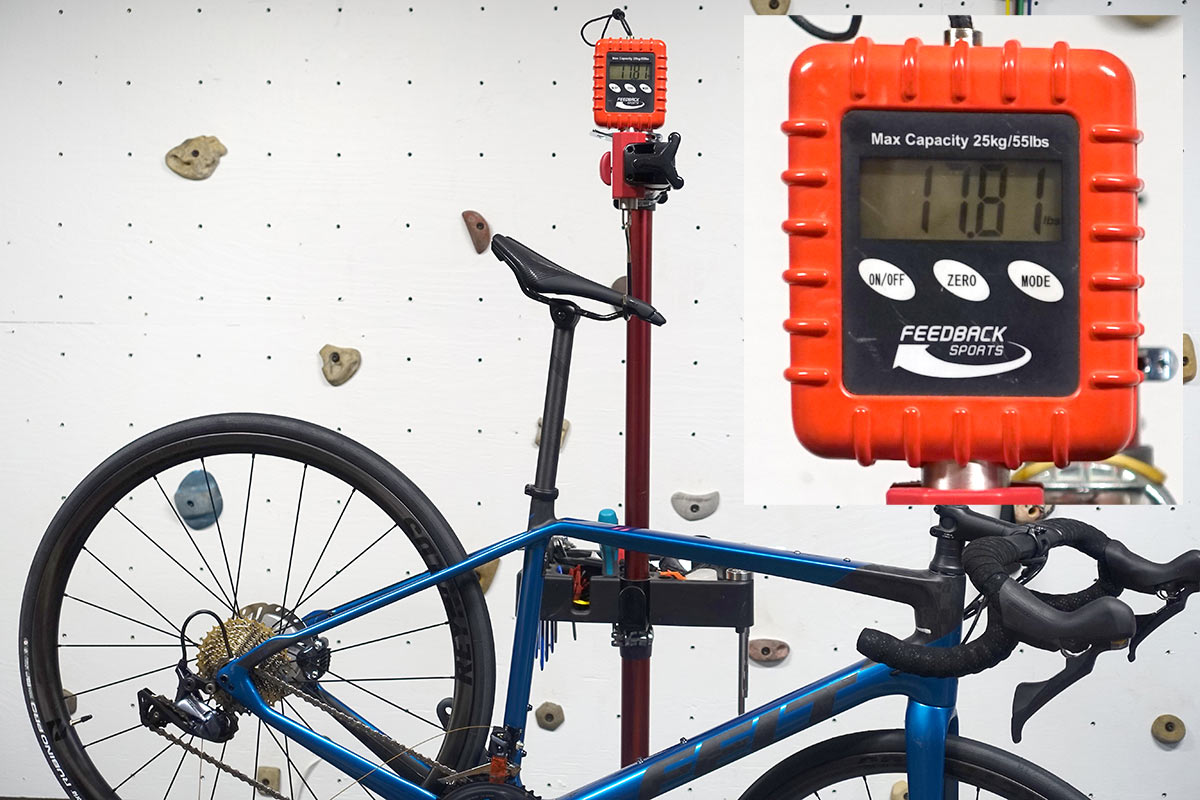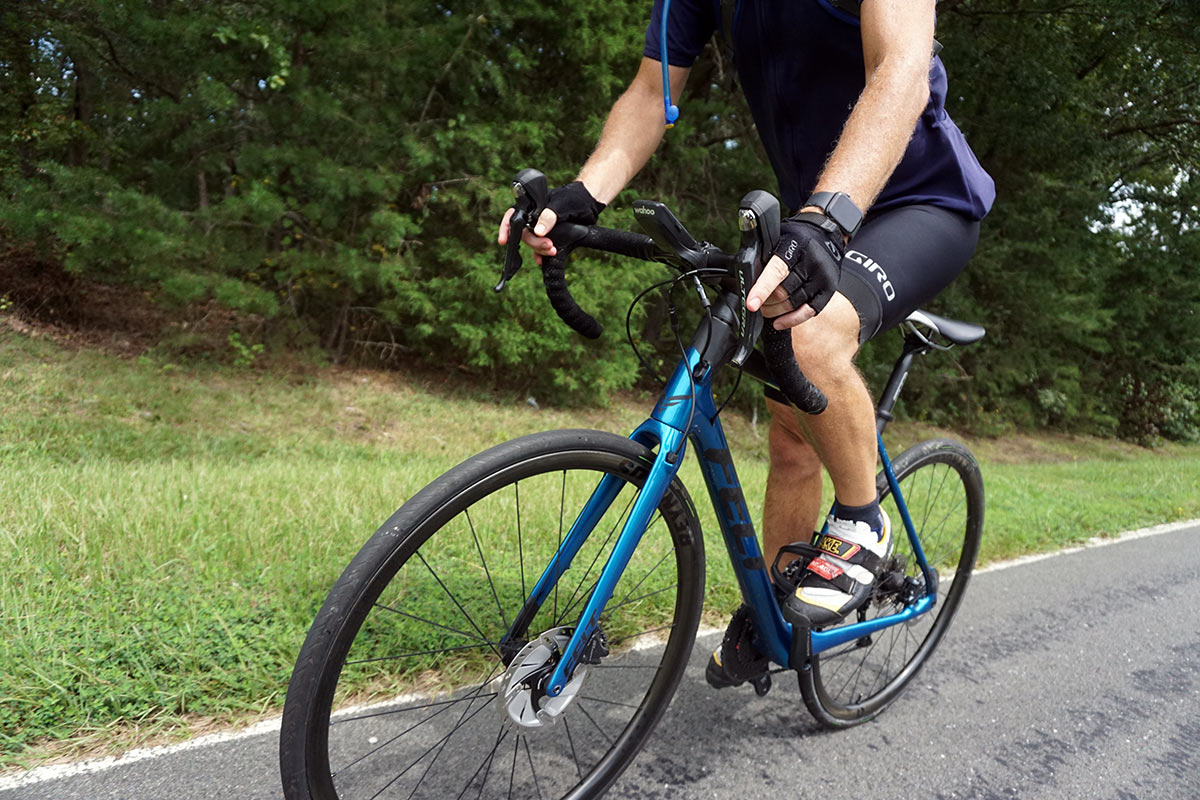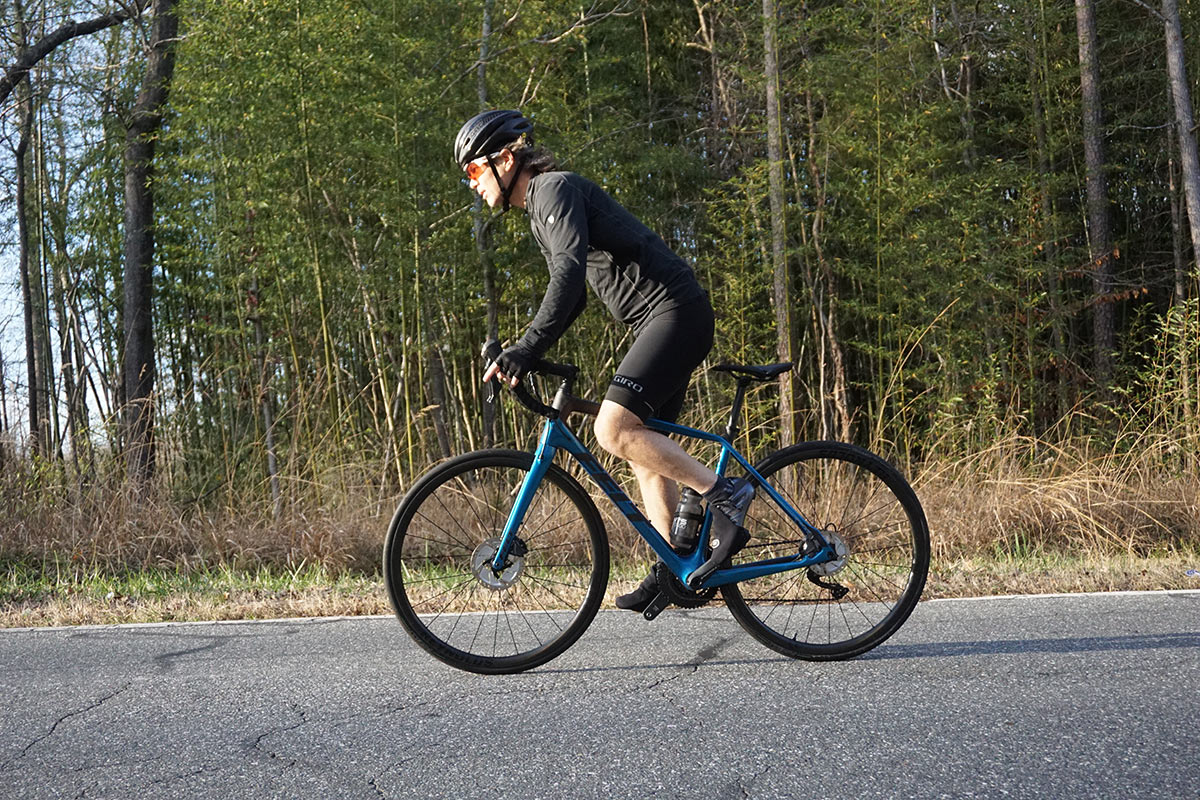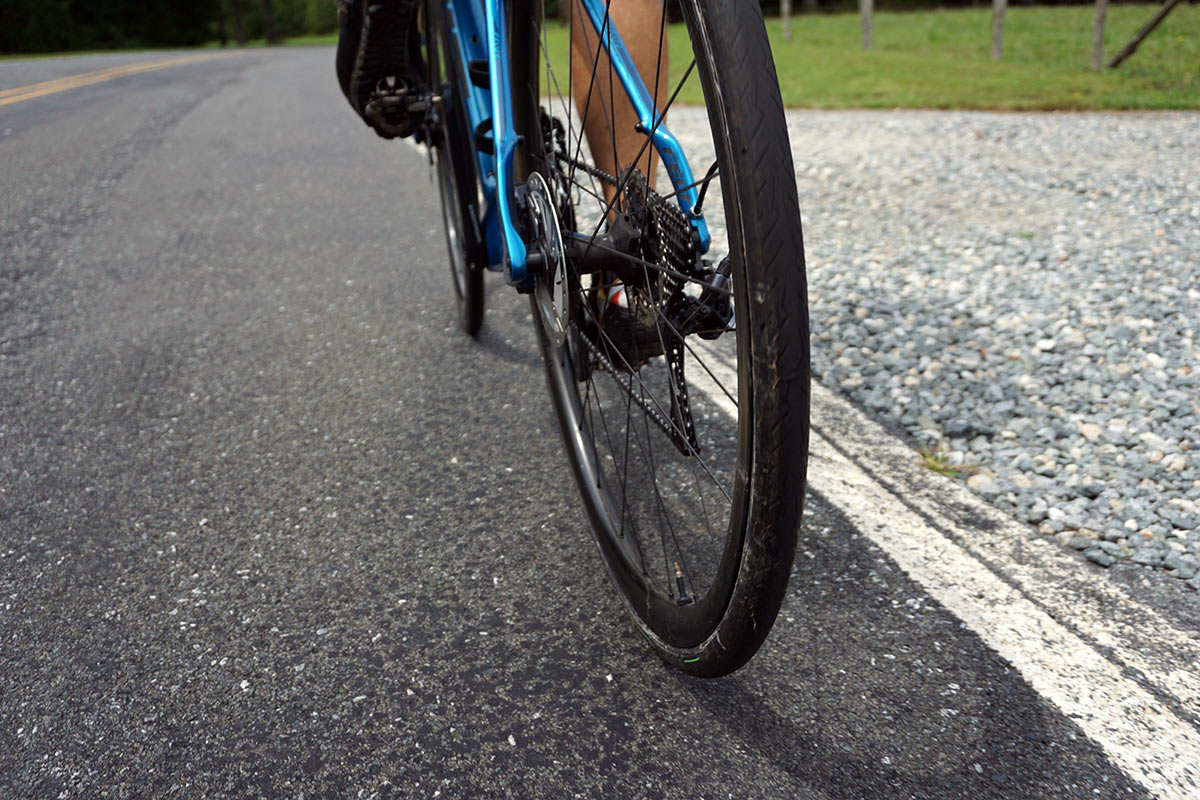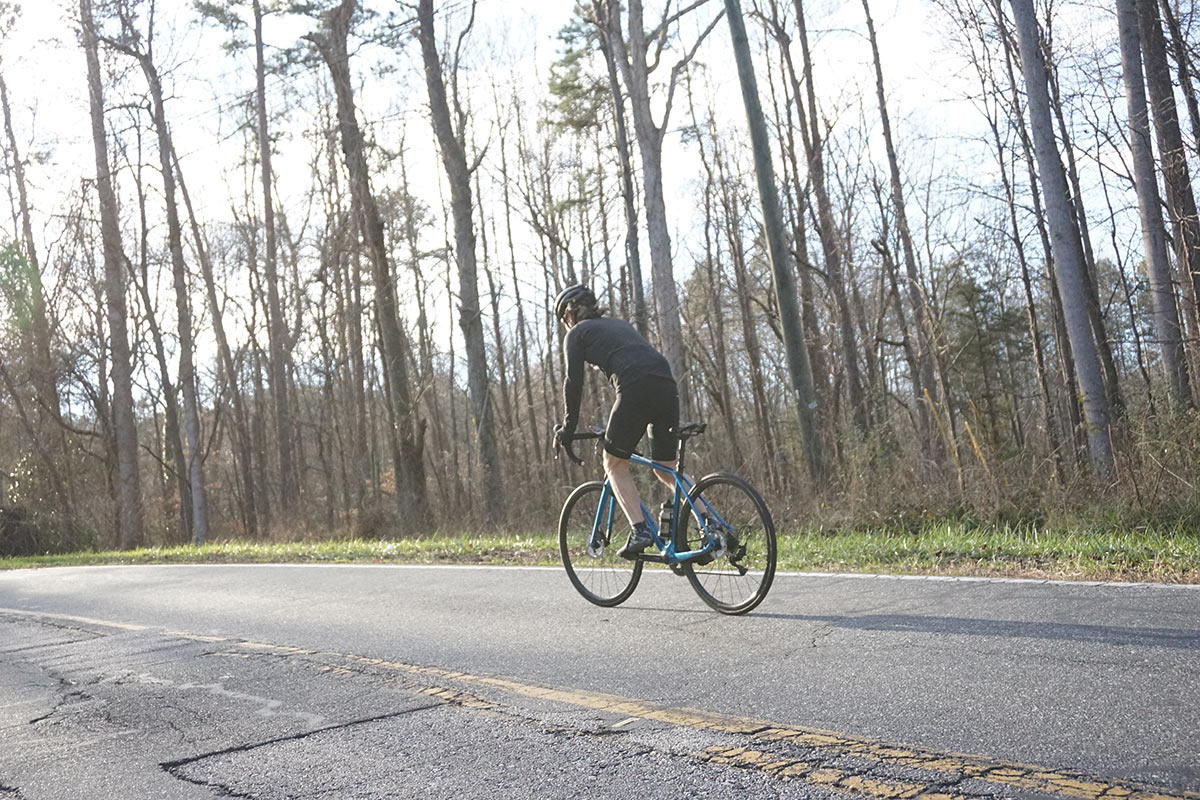Editor’s Note: This is a guest review from one of our support crew, guided and edited by Bikerumor’s team. Grady is a long-time cyclist with a killer collection of steel bikes, including a pristine Bridgestone that’s drool-worthy. He rides with us frequently and helps with photo shoots when he’s not teaching high school full time. If you’ve been on the fence about upgrading to the latest and greatest, or just curious about Felt’s road bikes, this review is for you. – Tyler
I’m what you’d call an “old school” biker. A guy who has (stubbornly?) stuck to the notion that steel lugged frames will always be superior to the highfalutin carbon and other “space age” materials, that a stiff leather seat provides the best support for the tush, and that caliper brakes are the only way to go on a road bike.
Mostly, that’s my romanticism for a bygone era. An aesthetic. A material manifestation of a lifestyle ideal. Think wannabe Williamsburg hipster.
Well, not anymore.
Felt VR Advanced details & actual weight
The Felt VR series is their long-distance, endurance, grand fondo bike. The “Advanced” nomenclature means it’s carbon fiber with the addition of TeXtreme to save weight without giving up stiffness or compliance.
TeXtreme’s broad carbon weave is just barely visible in the bare carbon sections. The bike shown here is a 2020 model, the 2021 versions use the same frame but with different paint schemes that show the carbon on other parts of the bike.
Felt’s graphics and colors are spot on, and the gloss/matte carbon combo is beautiful. As someone who takes aesthetics seriously, once I was used to the much thicker carbon frame compared to a steel frame, I had to admit the Felt is an incredibly attractive bike. Using the paint over carbon to create the logo (versus decals) kept it very clean.
The carbon fiber dropouts use only a minimal threaded metal insert for the thru axle. The front is nice, but the rear dropout section, brake mount and shaped seatstays are a work of art.
Felt shapes the lower stays around the brake caliper, creating a unique aerodynamic look, too. But there’s function in that form…
Felt sets the seatstays off the seat tube, driving forces past it and into the top tube. Combine that with additional shaping at the top of the seat stays and they’re able to build compliance into the bike that makes it smoother on rough surfaces.
Nearly hidden, both the fork and frame have stealthy fender mounts, too. Felt even sells a model-specific fender kit for the VR if you want all-weather protection.
Jumping back to the front, the headtube area is stout without looking monstrous. Mixed cable ports use a separate entry port on the headtube for the rear brake hose, with shifting cable stops leading into the downtube.
Top tube “bento box” mounts are a nice touch.
Like the headtube, the bottom bracket shell is stout without looking too big. That’s basically the vibe of the Felt…it’s clearly designed to perform well, but it doesn’t throw it in your face. Subtle, but obvious.
The VR Advanced comes with 700×30 tires, but there’s room for more.
It’s worth noting that the bike comes with tubeless-ready Reynolds carbon wheels, but non-tubeless Vittoria Rubino Pro 700×28 tires (2021 models get a larger 700×30 size, but still tube-type only). We swapped for tubeless-ready Pirelli tires to add a bit more volume and ditch the tubes.
Felt’s house brand Devox component line includes this ergo alloy handlebar, which provides a nice broad surface for resting my hands. Bar widths range from 38cm to 44cm depending on frame size, and my size 54 bike came with a comfortable 42cm bar width.
I remember when a “light” road bike was 22-24lbs. This one comes in at 17.81lbs (8.08kg)! That exactly matches Felt’s claimed weight, BTW, and is for this size 54 of the $4,999 Ultegra build, which includes:
- Shimano Ultegra R8020 mechanical group w/ hydraulic disc brakes
- Reynolds AR29 custom built wheels
- Devox DBar handlebar and alloy stem, carbon seatpost
- Prologo Dimension Space saddle
It felt so light, almost like a toy. Unbelievably light. A tap on the carbon frame produces a dull thud, a bit like plastic. I was used to the satisfyingly bright ‘ting’ of steel, but this is nice, too.
What’s impressive about Felt’s offerings is that many models have a very low starting price point. You can get into a very upgrade-worthy VR 60 with a lightweight aluminum frame and 23.25lb claimed weight w/ Shimano drivetrain for just $1,249. Carbon models start at $3,499.
Felt VR Advanced Ride Review
We originally called in the VR for a ~240 mile, three-day ride from Greensboro, NC, to the coast in summer 2020. My steel bikes weren’t ready for that, and I had to keep up with Tyler on his carbon test bike.
The VR appealed to me not just for the looks, but because it was designed specifically for long-distance riding. That it’s fully modern was a nice upgrade, and I haven’t stopped riding it since. All told, I’ve got ~800 miles on it and don’t want to give it up.
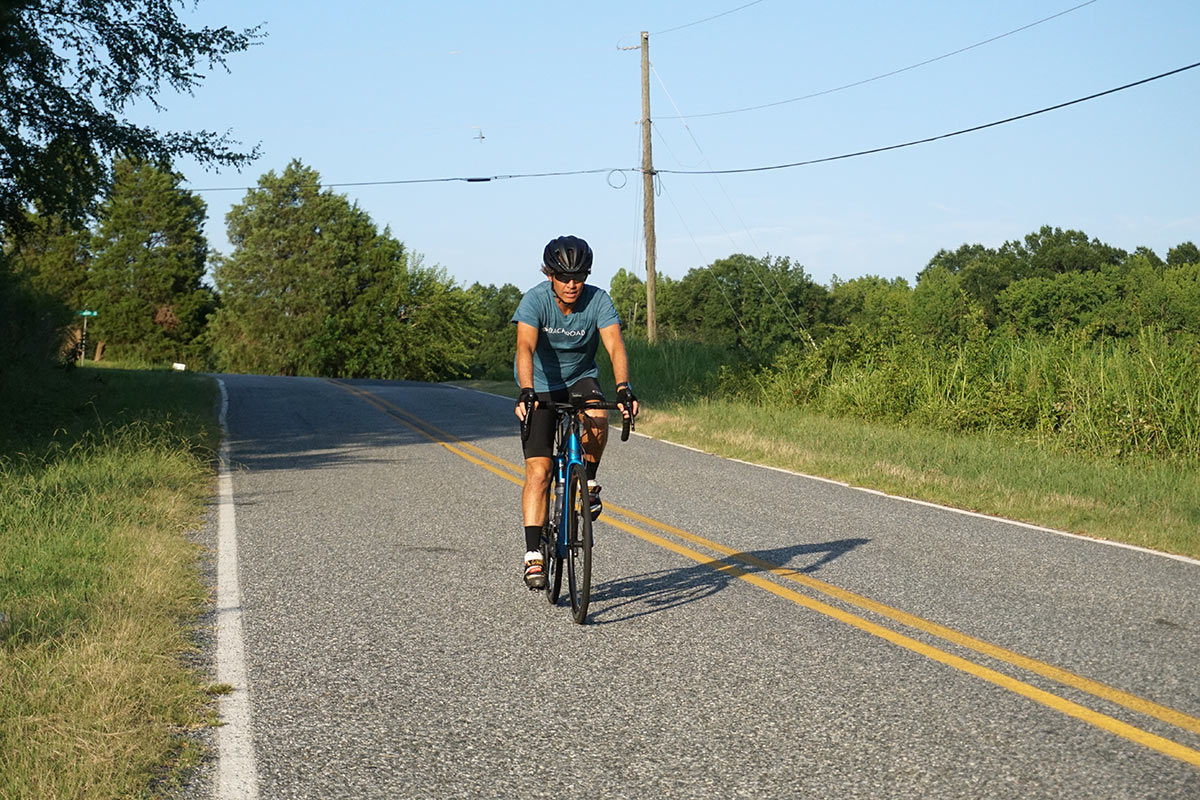
The biggest thing I noticed right off the bat was how the geometry of the Felt was so different from my steel frame road bike. The Felt has a sloping top tube that keeps the seat tube low relative to the handlebars, which has a big impact on how you are positioned on the bike. Chalk this up to a taller headtube and stack height.
Rather than being hunched over the handlebars in an awkward fashion, the Felt keeps you more upright in a much more comfortable body position for those longer road rides. For me, this was a godsend and worth the price of admission alone. While I prefer that my age not become a main talking point let’s just say that my body greatly appreciated the more upright position, especially on longer rides.
The Felts’ favorable geometry is augmented by a very comfortable flat top portion of the handlebars. This oblong flat portion allows you to be able to rest your hands on the handlebar in a much more comfortable position than the typical smaller round handlebar. Taken together with the upright positioning on the frame, it’s an incredibly comfortable ride.
Having ridden steel frames for 20+ years, I had concerns about the Felt frame. Was it going to be less absorbent than my steel frame? Would the frame be too rigid? My fears were completely unfounded as the Felt carbon frame was extremely comfortable and felt every bit as shock absorbent as a steel frame does.
While I can’t say the experience is exactly the same or anything, the Felt carbon frame was both extremely responsive while at the same time offered a high level of shock absorption. My body never felt like it was getting beat up by the road. Perfect for long rides and I dare say at least as comfortable if not more so than any steel bike I’ve ridden, with the added bonus of being more responsive and a whole lot lighter.
Things that mostly go without saying these days:
- Hydraulic disc brakes are awesome
- Ultegra is flawless
- Tubeless…worth it, but takes more maintenance
So, has the aging hipster wannabe lugged steel frame stone age man sold out and gone high tech carbon spandex guy. The answer is….yes and no.
Yes, the Felt is a keeper in every way, from the look, the geometry, the carbon frame weight, responsiveness, and road dampening features. Coupled with the braking and shifting performance, it is a bike built to catch the eye and ride for the long haul.
Why no? No matter how light and how absorbent a frame gets and how awesome the braking system gets, there will always be a part of me that’s down for a ride on my lugged steel frame bike.
The old steel frame may not make it outside the city limits as much, but she still has a place in my stable. However, I will be on the Felt when it comes to the road rides from here on out. After our multi-day journey last summer, I have my sights set on a longer bike trip this summer, and I’m hoping to have the Felt underneath me for the journey!
